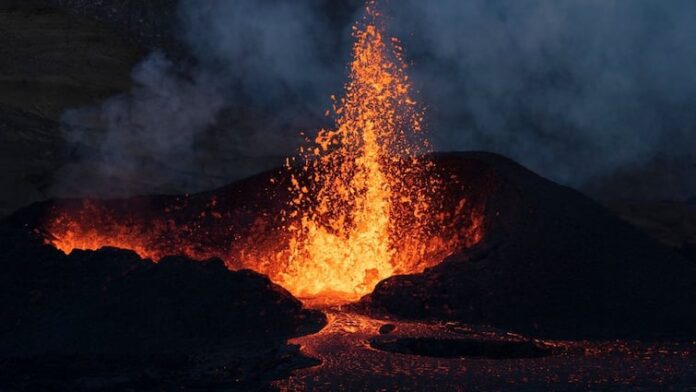The Earth’s belly holds a massive amount of material constantly in the churn. This is what results in volcanic eruptions. While volcanic eruptions can cause widespread loss of life and property in their immediate aftermath and vicinity, some of the really massive eruptions can trigger long-term cataclysmic consequences at a global scale. Like the Mount Tambora volcano eruption in Indonesia over 200 years ago, which thrust the world into a ‘year without a summer’ with many other disastrous impacts on the weather cycle.
According to a CNN report, “scientists warn the world may be due for another” eruption of the same scale this century. The next massive eruption will “cause climate chaos”, Markus Stoffel, a climate professor at the University of Geneva, is quoted as saying in the report, noting that “geological evidence suggests a 1-in-6 chance of a massive eruption this century”. “Humanity does not have any plan” for such an eventuality, he told CNN.
Devastation Wreaked By Mount Tambora Eruption
When Mount Tambora, located on the island of Sumbawa, erupted in April 1815, the aftermath became known as the ‘Year Without a Summer’. Global temperatures dropped significantly, leading to widespread crop failures, food shortages, and starvation. This period also saw a cholera pandemic, resulting in the deaths of tens of thousands.
The eruption, the CNN report notes, is often credited with inspiring Mary Shelley to write Frankenstein while she was taking refuge from the “unseasonably cold weather in Switzerland in 1816”.
According to the Smithsonian Institution, the 1815 Tambora eruption was “history’s largest explosive eruption”, and caused an estimated 60,000 fatalities.
According to the National Geographic, on the island, the eruption of Mount Tambora resulted in the immediate deaths of at least 10,000 people, with estimates suggesting that the total could exceed 90,000. Most deaths were caused by the searing hot, toxic pyroclastic flows — fast-moving currents of gas and rock that cascaded down the mountain.
Far-Reaching Cataclysmic Effects
The eruption released approximately 100 megatonnes of sulphur aerosols into the stratosphere, creating a gaseous surge that transformed into a global haze. As Liz Cottrell, director of the Smithsonian Institute’s Global Volcanism Program, noted in an interview with National Geographic, “People literally on the other side of the world (were) impacted.”
Initially, this deadly haze produced striking and unusual sunsets that captivated artists around the globe. However, it also reflected — and blocked from the Earth — a portion of incoming sunlight, leading to a cooling of the planet by about half a degree Celsius, which disrupted climate patterns for a troubling three years.
The CNN report notes that the impact of a similar eruption might be worse now than in 1815, because of global warming.
“It’s a more unstable world now,” Michael Rampino, a professor at NYU, who investigates links between volcanic eruptions and climate change, is quoted as saying. “The effects might be even worse than we saw back in 1815.”
‘Impossible To Predict’
Recent seismic activity at Mount Tambora has sparked concerns about potential future eruptions. In April 2024, the Indonesian Center for Volcanology and Geological Hazard Mitigation (CVGHM) reported increased seismicity and observed steam plumes rising from the volcano, prompting the elevation of the alert level to 3 on a scale of 1 to 4. The Smithsonian Institution notes that minor lava domes and flows formed on the caldera floor — calderas are the large depressions that form when a volcano erupts and collapses — at Tambora during the 19th and 20th centuries.
However, in a 2011 report, the experts from the US Geological Survey (USGS) said a major eruption is highly unlikely in the near future. The 1815 eruption was extraordinarily large, and it would require many hundreds, if not thousands, of years for Tambora’s magma chamber to recharge to that extent, they noted. While smaller eruptions or ongoing volcanic activity cannot be ruled out, the prospect of a catastrophic event similar to the 1815 eruption is considered improbable in the foreseeable future.
According to the CNN report, the “next eruption could happen anywhere”. “There are areas scientists are watching, including Indonesia, one of the planet’s most volcanically active regions, and Yellowstone, in Western US, which hasn’t experienced a huge eruption for hundreds of thousands of years,” it notes.
“But which one next and when — that’s still impossible to predict,” Stoffel is quoted as saying.
Massive volcanic eruptions cannot be prevented, but there are ways to prepare, Stoffel added. He called for experts to assess worst-case scenarios, run stress tests and come up with plans: everything from evacuations to aid efforts and securing food supplies.
The writer is an independent journalist.

